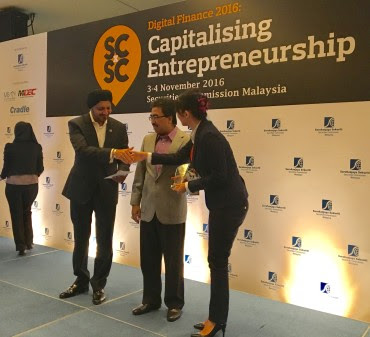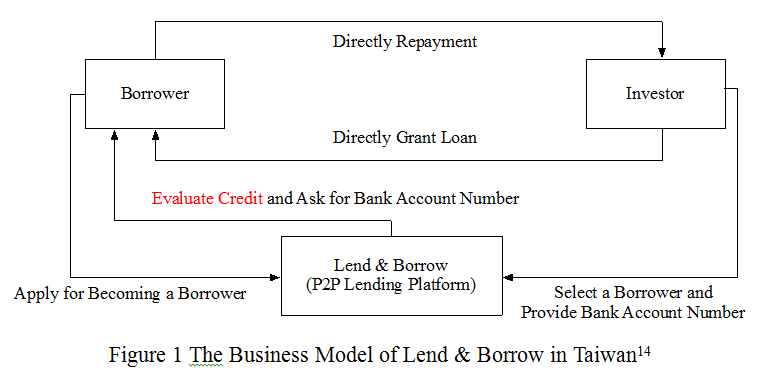This is a guest post by Pawee Jenweeranon, a graduate school student of the program for leading graduate schools – cross border legal institution design, Nagoya University, Japan. Pawee is a former legal officer of the Supreme Court of Thailand. His research interests include internet finance and patent law in the IT industry.
1. Introduction
In the recent years, it is inevitable that the financial technology or Fintech takes the significant role toward the evolution of financial services industry in this region. In other words, Fintech normally be used to improve the financial industry services.
In 2015, the Monetary Authority of Singapore (hereinafter referred to as “MASâ€) has committed two hundred twenty five million Singapore Dollar (around 166 million USD) to support the development of Fintech industry for the startup ecosystem in the upcoming years[1]. This is a good reflection of the significance of the financial technology or Fintech development in Singapore.
From the economic perspective, Small and Medium Enterprises (hereinafter referred to as “SMEsâ€) are important part of Singapore’s economy. SMEs account for 99 percent of all registered enterprises in Singapore[2]. From this reason, enhancing the competitive capacity of Singapore SMEs is essential for Singapore economy development.  Even almost all of the SMEs in Singapore are supported by the Governmental Enterprise Development Agency and Centers[3], (more than 100,000 SMEs got funding support by the Singapore government[4]); however, internet financial technology was also proposed as an alternative mechanism for enhancing the competitiveness of Singapore SMEs in the recent years[5].
2. Regarding Peer to Peer Lending
2.1 Background
Generally, there are many peer to peer lending platforms in Singapore; however, they normally lend money to businesses rather than individuals due to the strict regulation for money lenders. The additional limitation on lending to low-income borrowers[6] who are Singaporean citizens or permanent residents which is another requirement should be considered by the lenders.
In general, money lending in Singapore is mainly regulated by the Moneylenders Act 2010 and the Moneylenders Rules 2009. For the Moneylenders Act 2010, due to the main purpose of this act is to develop consumer protection mechanism to protect borrowers of small amount loans[7], this is the reason why the act provides stringent limitation for moneylenders to operate their business. This is another key different of money lending law of Singapore compared to other countries in Asia such as Hong Kong which focusing more on lending activity[8]. Briefly, the act requires moneylenders to hold the Moneylenders license with obligations and limitations for licensee[9].
In Singapore, even there are strict regulations in the existing law relating to a money lending business; however, there is the legislative effort of the Singapore government to address the issue regarding Securities-based Crowdfunding, which can reflect the understanding of the Singapore government toward the development of Financial Technology (Fintech) and the supporting regulatory framework.[10]
2.2 The Regulatory Framework for Peer to Peer Lending Business
From the document published by the MAS on Lending-based Crowdfunding – Frequently Asked Questions (FAQs)[11], generally, the operation of P2P lending is restricted by MAS under the Securities and Futures Act (Cap. 289) (SFA) and the Financial Advisers Act (Cap. 110) (FFA).
Specifically, the P2P lending business needs to prepare and register a prospectus with MAS in accordance with Section 239(3) of the SFA. In addition, not only the registration of the prospectus but also the P2P lending platform need to follow the licensing requirements, particularly, the P2P lending business which fall within the scope provided by MAS needs to hold a Capital Market Services (CMS) license. Continue reading →
 The Asian region is seeing an explosion in peer-to-peer activity, particularly, and crowdfunding in general,†says Daniel Daboczy, CEO and co-founder of Fundedbyme. “Fundedbyme is strategically positioned as the bridge between Scandinavia and Asia as we early-on saw the trend of cross-border investments – in the first equity crowdfunding campaign from Malaysia,
The Asian region is seeing an explosion in peer-to-peer activity, particularly, and crowdfunding in general,†says Daniel Daboczy, CEO and co-founder of Fundedbyme. “Fundedbyme is strategically positioned as the bridge between Scandinavia and Asia as we early-on saw the trend of cross-border investments – in the first equity crowdfunding campaign from Malaysia,

